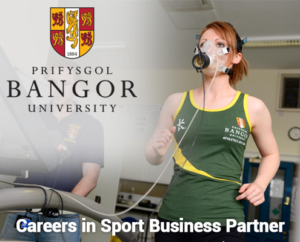David Harvey
Job title Performance sports scientist
Employer McLaren Applied Services

Have a passion for Motorsports and want to work with some of the leading companies in Formula 1?
David Harvey is a Performance Sports Scientist for McLaren Applied Services, helping to train the pit crew and engineers to create efficiency, precision and speed. David spoke to us about his role as a sports scientist, his advice for anyone looking to get into the field and the secrets of the industry.
How did you become a performance sports scientist?
Becoming a performance sports scientist I'd say there was some luck involved! Yet while you can be lucky getting a job, you need more than luck to keep it. I did both an undergraduate and a masters degree in sports science, but it was my voluntary work – for Aldershot Town FC – that impressed. I worked voluntarily during my summers. It was hard not earning any money at the time, but it paid off in the long run.
What does a sports scientist do?
I work for McLaren Applied Technologies and I help train the team behind the team, so the pit crew and engineers. I help ensure they’re fit for each race. The pit crew, for example, is a crucial part of the McLaren team, and it’s important they’re able to execute a pit stop accurately and in the quickest time. To help them do that, we work on the fundamentals of sleep, nutrition, hydration and immune function, and then apply strength and fitness training to help them do the job to the best of their ability.
What does that involve?
People think motor racing is a one-day event, but it’s more than that. A whole team will travel ahead of a race to set up the cars, the garage and pit facilities. Then there’s practice, qualifying and the race itself. It’s a demanding environment and quite often the team can experience things such as jet lag. That’s where we come in; we prepare the team for each race. We will train them between races at our human performance centre, and offer small interventions where needed to help solve problems the team members experience while away. These can include a lack of hydration, or the need to source local and nutritional food wherever they’re working. The fitness of the whole team is vital. We used to simply offer the team training programmes for them to do by themselves, and send them off to races with travel packs. However, since taking more of an active role in their overall wellbeing, our role has snowballed.
People might be surprised at the importance of the fitness of the team behind the team. Is it a case of trying to find marginal gains?
F1 racing is the ultimate team sport. Football clubs might have a big squad and a team of coaches behind that, but we probably have as many mechanics as clubs have squad members, and behind them is a further team of 600 people. And they all play a part in how a driver performs in any given race. I would argue that searching for marginal gains can sometimes detract from the focus of doing the simple things correctly. Get the basics right and you’ll notice more of an impact than any marginal gains. We concentrate on sleep, hydration, eating and immune function, which helps develop movement, concentration and focus, before anything else.
Is technology important in what you do?
Vital, and that has increased exponentially in the last two years. The rise of wearable technology has been important, and we’re always in search of the latest technology if we feel it will help us.
Are F1 teams constantly trying to find out what the opposition is doing?
Motorsport has a culture of secrecy. We have no idea what our competitors are up to, but that inspires us to pursue our own perfection.
What’s the best thing about working in Formula 1?
It’s great to see the product of your work on TV when each race comes around, and knowing that millions of people will be watching. It’s also a good atmosphere when the team is successful. I get to travel too. This year, I’ve worked with amateur drivers in places such as California, Bahrain and Spain. That was a lot of fun! And I was entrusted with training Stoffel Vandoorne, McLaren’s new driver for the 2017 season. He’ll be replacing Jenson Button, so watch out for him.
What makes a good sports scientist?
I would say 50 per cent knowledge, 50 per cent man management. You need the trust of an athlete to get the best out of them, and you gain that with good people skills but also the knowledge to help them be better. Trust can be lost as quickly as it’s gained.
What advice would you give to anyone who would like to get a job in sports science field?
Contact your local sports clubs and offer to work for them. If you’re particularly into F1, there are smaller teams around, but just getting involved with a sports team will show employers you’re keen to work in the field of sports science.
On the hunt for the latest talent
McLaren Applied Technologies are on a relentless mission to improve people’s lives by combining their fresh thinking and technology to solve crucial challenges in industries as diverse as health, public transport, automotive and motorsport. For their latest vacancies please visit their careers website www.mclaren.com/careers
For the latest news on McLaren Applied Technologies, please visit the website, or follow @MclarenApplied and LinkedIn.
For more advice on careers within sports science visit our ‘Sports Science’ section.

Are you a sports enthusiast? Push yourself to the limit at Bangor University. Develop your knowledge in Sport Science with expert teachers, research-led courses and state-of-the-art facilities. Get in touch and apply today.

